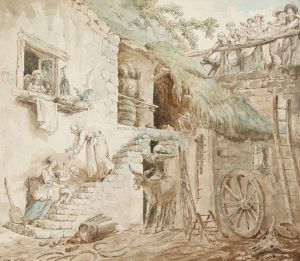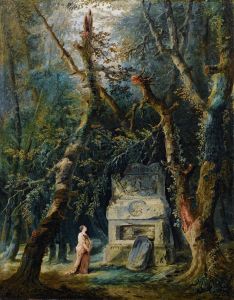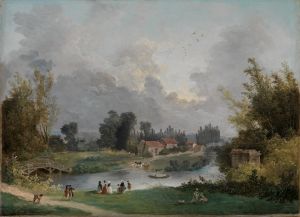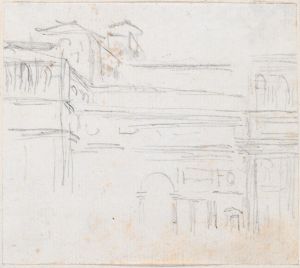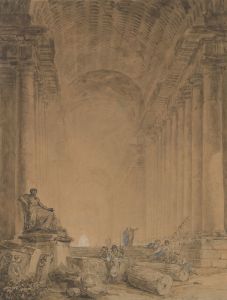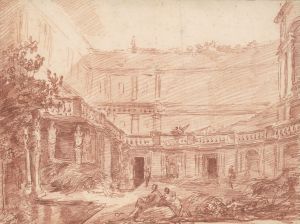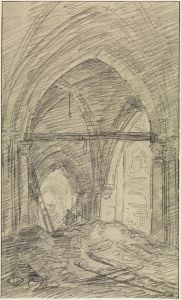
A Colonnade in Ruins
A hand-painted replica of Hubert Robert’s masterpiece A Colonnade in Ruins, meticulously crafted by professional artists to capture the true essence of the original. Each piece is created with museum-quality canvas and rare mineral pigments, carefully painted by experienced artists with delicate brushstrokes and rich, layered colors to perfectly recreate the texture of the original artwork. Unlike machine-printed reproductions, this hand-painted version brings the painting to life, infused with the artist’s emotions and skill in every stroke. Whether for personal collection or home decoration, it instantly elevates the artistic atmosphere of any space.
Hubert Robert's painting A Colonnade in Ruins is a notable example of the artist's fascination with architectural ruins and his ability to evoke a sense of timelessness and romantic decay. Hubert Robert (1733–1808), a French painter, draftsman, and engraver, was renowned for his depictions of ruins, both real and imagined, which earned him the nickname "Robert des Ruines." His works often combined elements of classical architecture with imaginative compositions, creating a dreamlike atmosphere that resonated with the 18th-century taste for the sublime and picturesque.
A Colonnade in Ruins portrays a grand colonnade in a state of disrepair, with broken columns and scattered architectural fragments dominating the scene. The painting exemplifies Robert's skill in capturing the interplay of light and shadow, which enhances the dramatic effect of the crumbling structure. The inclusion of small human figures amidst the ruins provides a sense of scale and emphasizes the grandeur of the architecture, even in its dilapidated state. These figures often appear engaged in everyday activities, such as walking or conversing, which contrasts with the monumental and timeless quality of the ruins.
The painting reflects the 18th-century European fascination with antiquity and the ruins of ancient civilizations, a theme that was particularly popular during the Enlightenment and the subsequent Romantic period. This interest was fueled by archaeological discoveries in places like Pompeii and Herculaneum, as well as the Grand Tour, a cultural journey undertaken by European elites to explore the classical heritage of Italy and Greece. Robert himself spent several years in Italy, where he studied ancient ruins and was influenced by the works of Giovanni Battista Piranesi, an Italian artist known for his etchings of Roman architecture.
While the exact date of A Colonnade in Ruins is not definitively documented, it is consistent with Robert's broader body of work, which often blended real and imagined elements to create evocative landscapes. His paintings were not intended to be accurate historical records but rather artistic interpretations that conveyed the beauty and melancholy of decay. This approach aligned with the aesthetic ideals of the time, which valued the emotional and intellectual impact of art over strict realism.
Today, A Colonnade in Ruins is recognized as a testament to Hubert Robert's mastery of the ruin genre and his ability to inspire contemplation of the passage of time and the impermanence of human achievements. The painting is housed in a prominent art collection, though specific details about its current location or provenance may vary depending on the source.





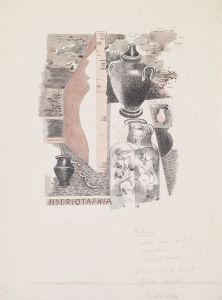


![Tombs of the Memlooks [Mamelukes], Cairo.](/imgs/217568/s/david-roberts-tombs-of-the-memlooks-mamelukes-cairo-74c4b2cc.jpg)

